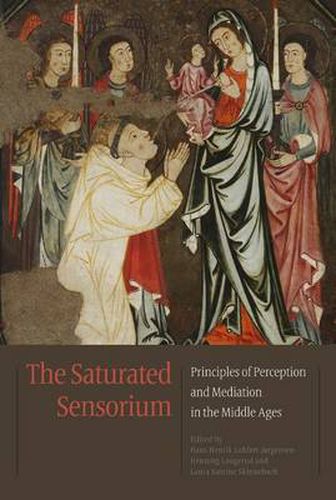Readings Newsletter
Become a Readings Member to make your shopping experience even easier.
Sign in or sign up for free!
You’re not far away from qualifying for FREE standard shipping within Australia
You’ve qualified for FREE standard shipping within Australia
The cart is loading…






The Middle Ages integrated the human senses and unified their media into a culture of saturated sensation. The saturated sensorium nurtured principles of perception and mediation permeated with paradox, intersensorial entanglement, and multimodal interchange. This book addresses medieval modes of multi- and intermediality in material as well as immaterial culture and cultural history. It exemplifies the sensory and multisensory experiences sustained by medieval religion, art, archaeology, architecture, literature, liturgy, music, monasticism, miracles, cult, piety, love, eating, drinking, cognition, recollection, and burial. It ponders over perceptual practices performed as ritual, devotion, consumption (sacred or secular), memory, sanctity (in persons or percepts), church environment, sacramental imagery, romantic representation, and word-image-song-dance remediation. It illuminates the intertwined and compound character of the five Aristotelian categories of visus (sight), auditus (hearing), tactus (touch), olfactus (smell), and gustus (taste), showing that there was indeed far more to the senses and to sense experience than this classical categorisation might suggest. It aims to saturate our sense of medieval mediation beyond established modern and classical categories of communication.
$9.00 standard shipping within Australia
FREE standard shipping within Australia for orders over $100.00
Express & International shipping calculated at checkout
The Middle Ages integrated the human senses and unified their media into a culture of saturated sensation. The saturated sensorium nurtured principles of perception and mediation permeated with paradox, intersensorial entanglement, and multimodal interchange. This book addresses medieval modes of multi- and intermediality in material as well as immaterial culture and cultural history. It exemplifies the sensory and multisensory experiences sustained by medieval religion, art, archaeology, architecture, literature, liturgy, music, monasticism, miracles, cult, piety, love, eating, drinking, cognition, recollection, and burial. It ponders over perceptual practices performed as ritual, devotion, consumption (sacred or secular), memory, sanctity (in persons or percepts), church environment, sacramental imagery, romantic representation, and word-image-song-dance remediation. It illuminates the intertwined and compound character of the five Aristotelian categories of visus (sight), auditus (hearing), tactus (touch), olfactus (smell), and gustus (taste), showing that there was indeed far more to the senses and to sense experience than this classical categorisation might suggest. It aims to saturate our sense of medieval mediation beyond established modern and classical categories of communication.